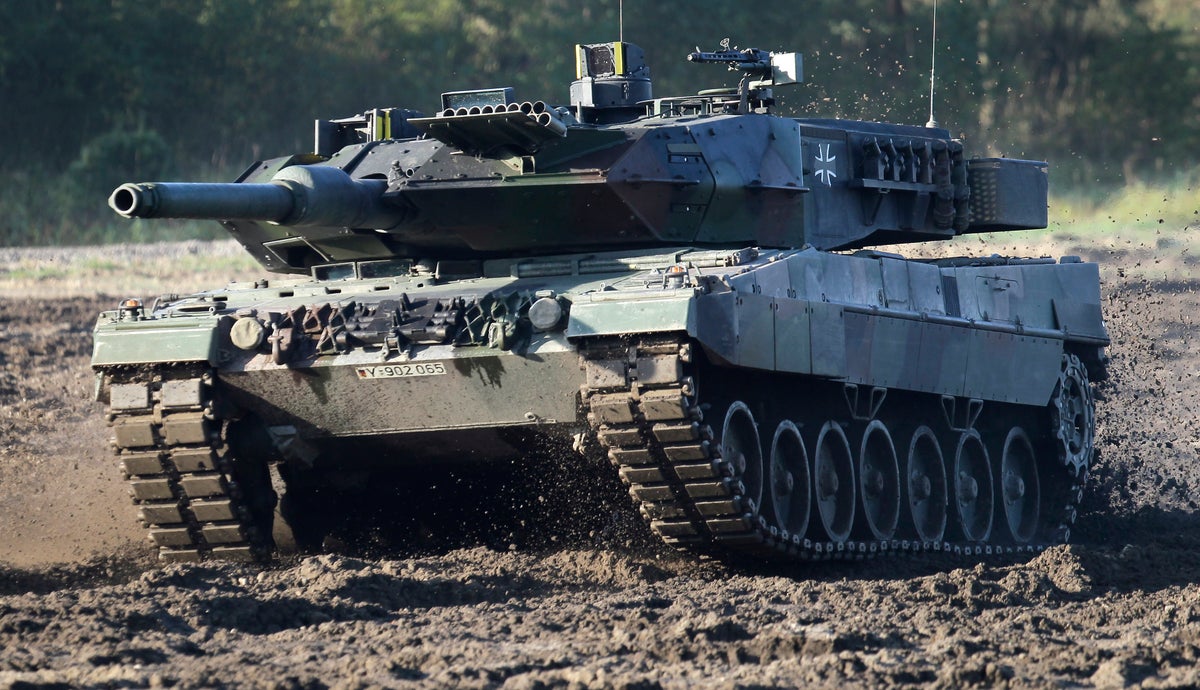
The US defense secretary, Lloyd Austin, has urged allies to "dig deeper" to support Ukraine at a meeting of Nato and defense leaders in Germany, as pressure grows on Berlin to authorise its German-made Leopard 2 tanks to be sent from nations across Europe to Ukraine. However, so far Berlin has refused to budge.
Ukraine believes the tanks are vital to its ability to hold off Russia's invasion, and Western nations believe that – given their use by armies across Europe – they would provide the swiftest way to give Kyiv what it is crying out for. Once Berlin signs off on them being re-exported from other nations. So why does Kyiv rate them so?
The Leopard 2 tank is regarded as one of the West’s best. German defence company Krauss-Maffei Wegmann has built more than 3,500 such tanks since beginning production in 1978.
Follow the latest in our live blog here
The tank weighs more than 60 tons, has a 120mm smoothbore gun and can hit targets at a distance of up to five km. It has a laser range finder that can measure distance to an object, meaning that aiming at moving targets while traveling over rough terrain becomes easier. Night vison capability also helps.
Some 20 nations operate the Leopard 2, including around a dozen in Europe. This means several nations could each chip in some of their tanks to support Ukraine. This would also make it easier for Ukraine to manage maintenance and crew training. Nations operating the Leopard include Canada, Denmark, Finland, Netherlands, Norway, Austria, Poland, Spain, Sweden and Turkey.
Given that Ukraine has been using Soviet-era tanks up until now, the Leopard 2 would be a big step-up in capability, particularly in terms of range of firepower and maneuverability.
Supplies of the Leopard 2 would help Ukraine make up some of the difference in artillery firepower between themselves and Russia. Given that Kyiv has been warning of a spring offensive (if not earlier by Moscow) that would be of particular value in holding territory, or pushing on to reclaim some of the land that has been lost to Moscow.
The Leopard 2 is one of the most widely used Western tanks, given the number of armies that could pass them on that are in (relatively) close proximity to Ukraine – including Poland. Analysts suggest that this quantity that could be sent to Ukraine and the relative ease of repair, given the ready supply of spare parts, are important factors.
Kyiv believes that speed is off the essence, as do neighbouring nations. It is all but impossible to buy a large amount of Leopard 2 tanks quickly, so re-exporting from other nations is the sole way to move swiftly. Germany’s defence industry is banned by law from producing them for stock-keeping. Countries ordering new tanks need to be prepared to wait two to three years for delivery.
Even if production were ramped up, experts say it could take at least two years for the first new tanks to leave the factory.
Still, it could take weeks for the first Leopard 2's to arrive on the battlefield even if Germany signs them off – and there is also the need for units to be trained to use them.
The Kremlin said on Friday that Western countries supplying additional tanks to Ukraine would not change the course of the conflict and the West would regret its "delusion" that Ukraine could win on the battlefield.
Reuters contributed to this report







